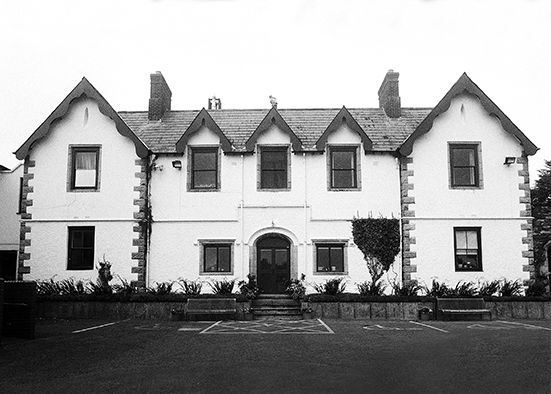Museum to highlight history of workhouse
Museum to highlight history of workhouse
15 February 2023

THE fascinating history of Downpatrick’s former workhouse is to be preserved for future generations.
While the majority of the imposing building — which at one time was home to an incredible 1,000 people — was demolished many years ago, one section remains.
It was an integral part of the former Down Council headquarters before it was razed to the ground after staff relocated to a new multi-million pound building at the Downshire Civic Centre on the outskirts of the town.
The remains of the Strangford Road workhouse enjoy protected status as the building looked after people impacted by the poverty and malnutrition
of the Great Famine of the mid-19th century.
Now its significant historical importance is to feature in a major new exhibition at the Down County Museum next year.
Newry, Mourne and Down Council officials are to begin work on researching the history of the workhouse, while new interpretative panels are to be developed and erected at the site.
And in addition to the museum exhibition, a series of workshops aimed at various audiences on the history of the workhouse will also take place next year.
Museum staff and the local authority’s heritage officer will carry out an audit of all available material on the workhouse, researching various sources, artefacts and the ancient discoveries made recently at the rear of the building where work on Down High School’s new multi-million pound campus is well underway.
Excavations initially uncovered an Irish famine graveyard but as archaeologists dug deeper, they discovered one of the largest prehistoric settlements ever discovered on the island.
Six new interpretative panels detailing the history of the workhouse are to be developed and it is hoped that they will be in place by April of next year, one month before the new museum exhibition.
Famine
The planned workshops, focusing on how the Irish famine affected the Downpatrick area, life in the workhouse and the findings of the archaeological dig are due to take place between June and November next year.
On Monday night, the local authority’s Enterprise, Regeneration and Tourism Committee agreed to researching the workhouse’s fascinating history ahead of the new temporary exhibition which is expects to open in May next year.
The Strangford Road building is widely regarded as a significant part of the district’s rich heritage with the demolition of the old council and garages used as stores opening up the view of the historic workhouse.
Politicians say they recognise the workhouse as an important element of Downpatrick’s historic past, with some previously suggesting that it had the potential to be redeveloped as an extension of the Down County Museum.
Constructed over 170 years ago, the building has major historical value with many highlighting its special architectural and historic interest which they insist must be preserved.
In the 1980s, the main workhouse block and fever hospital located at the rear of what remains of the building were bulldozed, with the workhouse was one of 130 constructed in Ireland.
The building is associated with the Poor Laws of the 19th century and as the decades progressed, it provided part of the administration block for the former East Down Rural and Down District Councils.
There was across-the-board support to recognise and preserve the history of the workhouse at Monday night’s council meeting following a proposal by Downpatrick area councillor Gareth Sharvin.
He urged the local authority to recognise the building’s “significant history” and to arrange the museum exhibition and erect the interpretative panels.
“The history of the workhouse and those who worked in it is an important part of our heritage and the lived experience within the Lecale area,” he said.
“It is a story that needs to be told and the lives of those who worked in it must be remembered. I am delighted that my motion calling for the development of a project on the history and development of the workhouse has been passed and will now go to full council for formal approval.”
Describing the workhouse project as “important,” Cllr Sharvin it will research the history of the building and help tell its story to a wide audience “which in turn will underscore the need to retain our services in the Down County Museum”.
He believes children and young people will find the project important as they will be able to learn not just history, but a thorough history of their area and a chapter of time that means a great deal to many people.
“This is not going to be a small scale project, but an extensive and thorough piece of work,” Cllr Sharvin explained.
“Perhaps the most important part of the project will be to know the history of the people of the workhouse. Their names need to be known and their history told and through this work they will be remembered and I think that is a fitting legacy for Downpatrick.”


